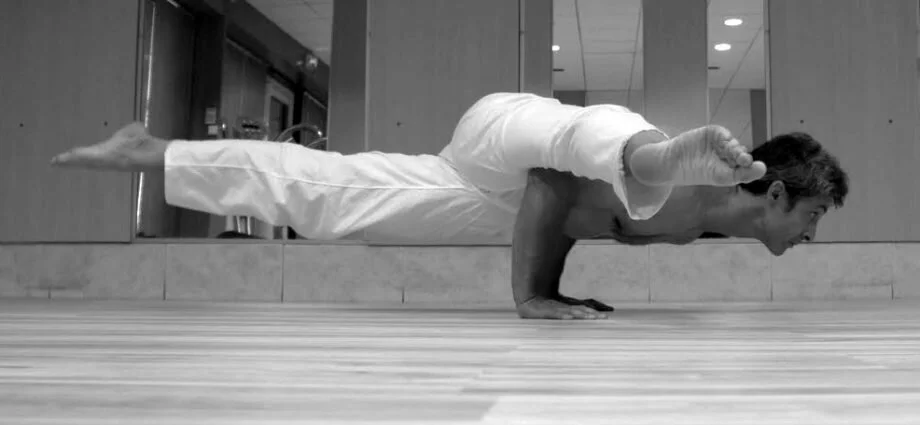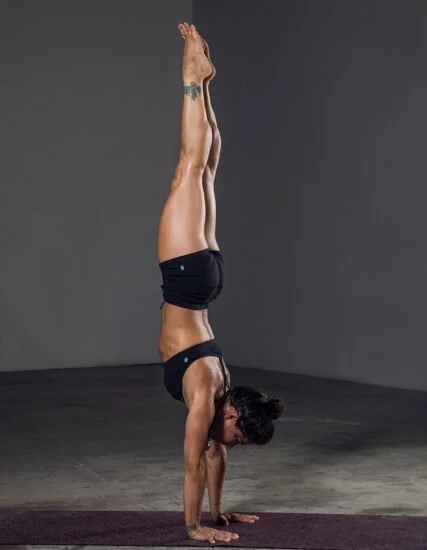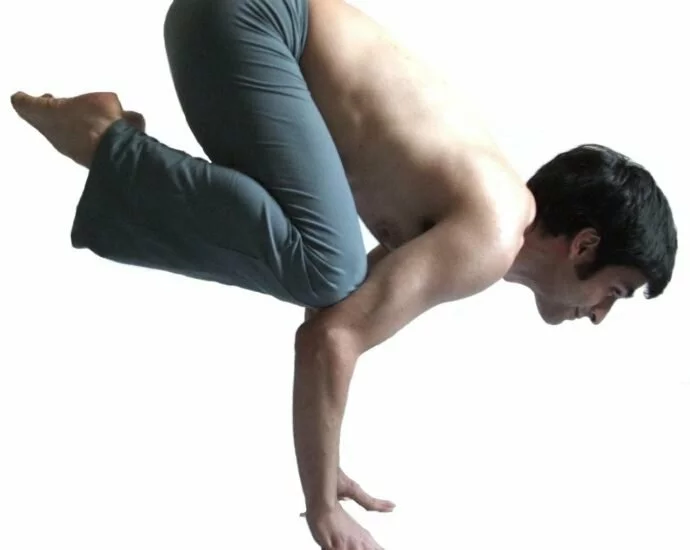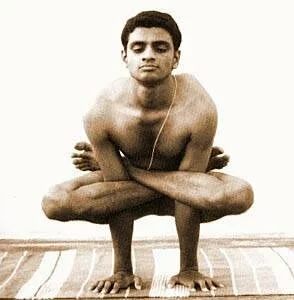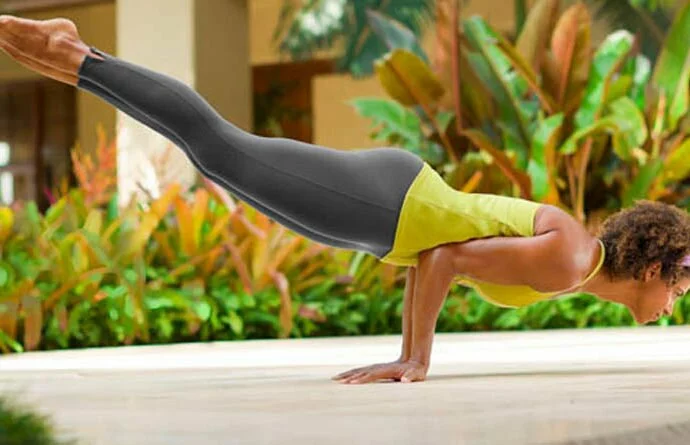Eka Pada Koundinyasana (परिवृत्त एक पद कोउन्दिन्यासन)
Eka Pada Koundinyasana I (IPA: [pɐriʋr̩t̪t̪ɐ eːkɐ pɐd̪ɐ koːund̪inɟɑːsɐnɐ]; Sanskrit: परिवृत्त एक पद कोउन्दिन्यासन; IAST: eka pada koundinyāsana I) or twisted one legged arm balance is an asana. The asana is dedicated to the sage Koundinya. This twisting arm-balance asana is a derived version of Koundinyasana (named after sage Koundinya)Continue Reading

